Vincents passion for pipe smoking
Author:
Benedict Goes
Original Title:
Vincents passie voor pijproken
Publication Year:
2015
Publisher:
Amsterdam Pipe Museum (Stichting Pijpenkabinet)
A tobacco pipe brings Vincent to rest
Vincent van Gogh really considers the pipe as his attribute. He is clearly devoted to his pipes and tobacco. He regularly writes enthusiastically about it. In a letter from Arles addressed to Emile Bernard (letter 696, October 1888), he is even offended when his friend Paul Gauguin portrays him without his pipe.
I do look like this to the face, but I always smoke a pipe. So I protest if that is supposed to represent my portrait.
This sentence refers to the portrait that Gauguin painted in 1888 of Vincent while painting sunflowers (Fig. 40). And indeed, Vincent does not smoke a pipe here.
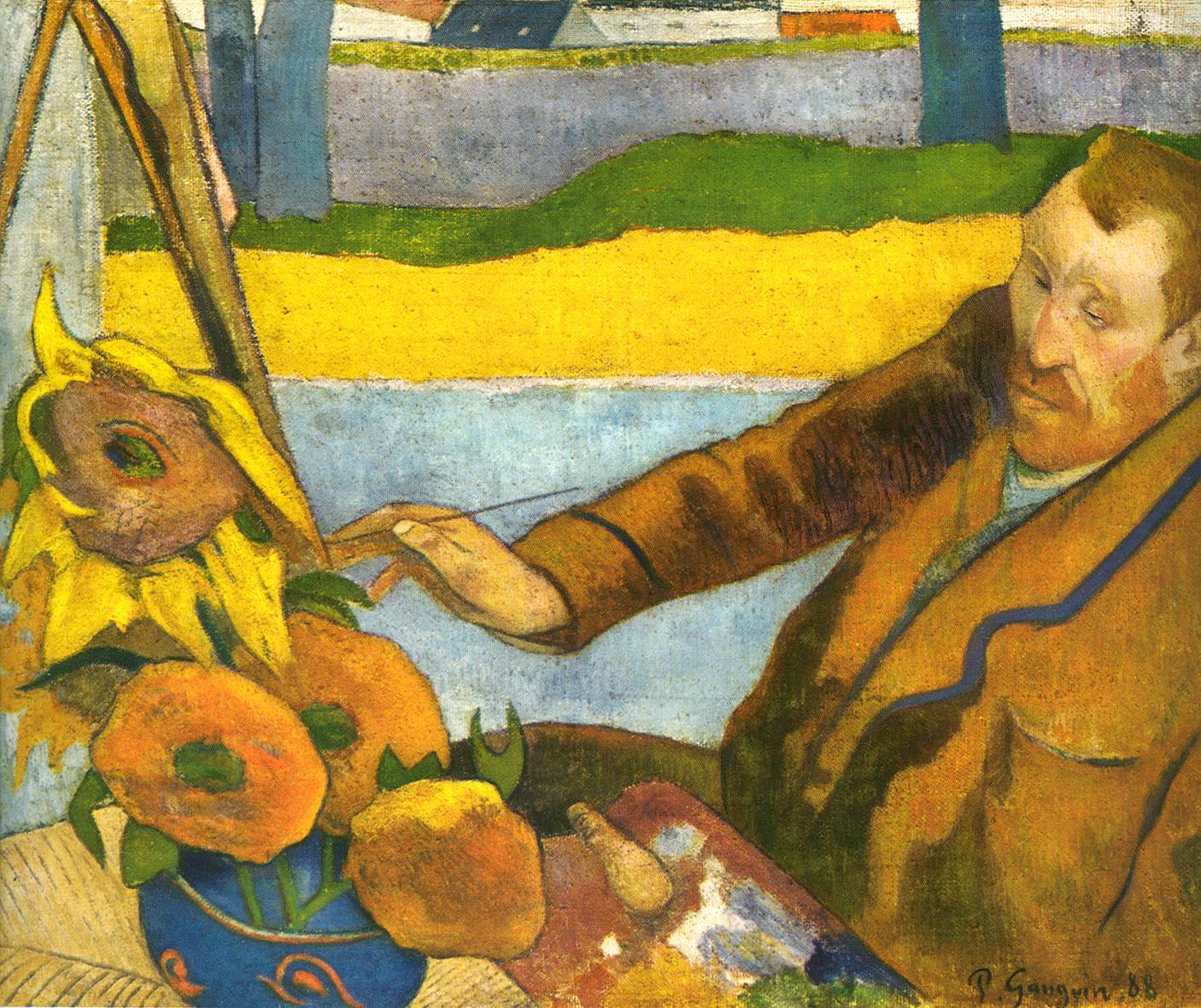
The letters to his brother Theo, who are always very cordial, show that Vincent loved his pipe and tobacco. When Vincent writes to Theo from London (letter 89, August 1876) he tells his brother that he has picked up the pipe smoking again and how much he likes it:
I found an old faithful friend in my pipe and now I think we will no longer divorce.
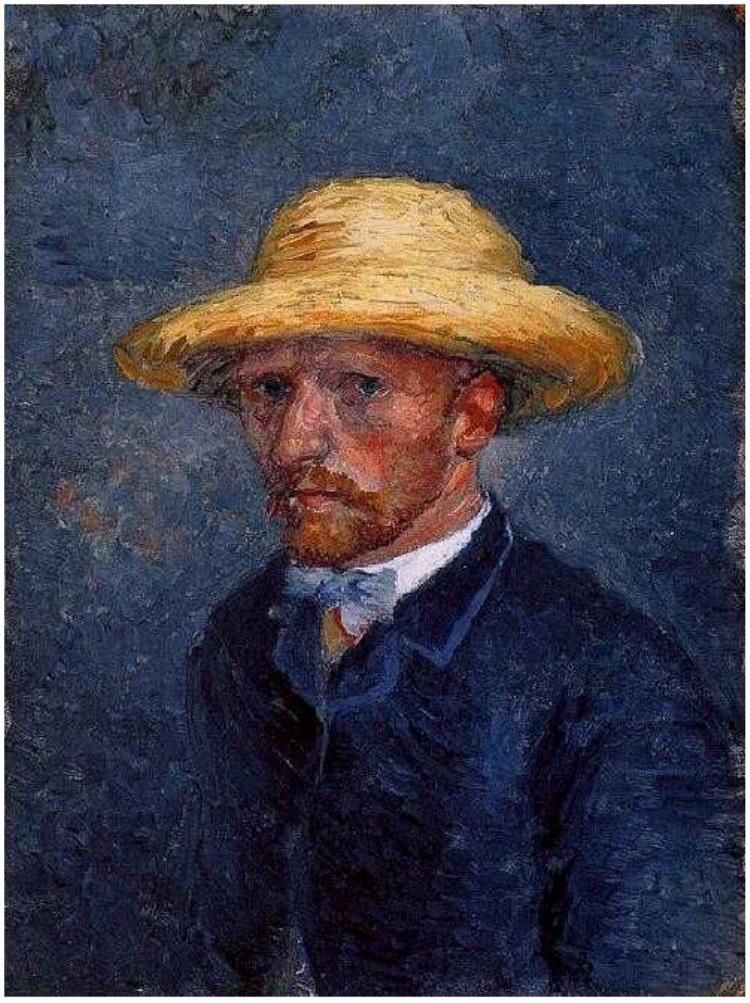
He smokes it in moments of rest, when he is satisfied with his work, his life, perhaps with himself. In an early letter from 1873 (letter 5, March 1873) he recommends Theo to smoke a pipe himself. According to Vincent, it is a good remedy to get in a better mood. Not much later we read that Theo followed the advice of his brother, because
I heard from Uncle V. that you also smoke.
The only portrait Vincent made of his younger brother has long been mistaken for a self-portrait, but has been identified as brother Theo for several years now. It is confusing that Theo wears Vincent's straw hat. They also have the same kind of beard, but Theo's is lighter and less red than Vincent's (Fig. 41).
How the pipe improves Vincent's mood
Vincent is easily dismayed by what others say to him, about himself or about his work. A letter from The Hague in the Spring of 1882 (letter 228, May 1882) shows how he views the criticism of his work:
In order to forget all about it [the critics], I'm going to lie in the sand in front of an old tree root, make a drawing of it. I smoke my pipe and look into the deep blue sky ... or the moss or grass. That calms me down.
A good example of this situation that Vincent paints is his tree trunk in the grass, a painting from 1890 (Fig. 42).

Or he will look through a few old, successful drawings again
so that I get back in my mood and light my pipe and start drawing again.
A few years later, Vincent is in a melancholic mood, if not depressed. From Arles he writes to his sister Willemien that his pipe cheers him up, among other things (letter 764, May 1889):
Every day I take the remedy that the incomparable Dickens prescribes against suicide. It consists of a glass of wine, a piece of bread with cheese and a pipe of tobacco.
The austere menu indicates that the pipe is smoked not only for taste but also against a faint feeling of hunger. In addition, the nicotine naturally provides better concentration and a sense of well-being.
The pipe gives concentration in his work
As in his early years, when he is studying hard to become a priest, Vincent finds concentration in smoking. As a 24-year-old young man, he writes a letter from Amsterdam to brother Theo, who will support him for years to come with sending money and useful things (letter 133, October 1877):
Do not hurry to send the tobacco, still have stock, that is a good and necessary aid for studying.
When Vincent is at work, he draws for hours, sometimes all night long. His pipe is thereby his companion that helps him to concentrate. In a letter to brother Theo, he puts it this way (letter 355, June 1883):
But it is precisely when one is so drawn through the work that one has to stay there until one drops, so to speak. I will not get much sleep again tonight because of the drawing. But it is very cosy with a pipe at night when everything is quiet, and the morning and sunrise of the sun is divine. Now dude, prosperity in everything, adieu.
Vincent painted a landscape at sunrise several times, such as a yellow wheat field (Fig. 43) or a field of poppies (Fig. 44).
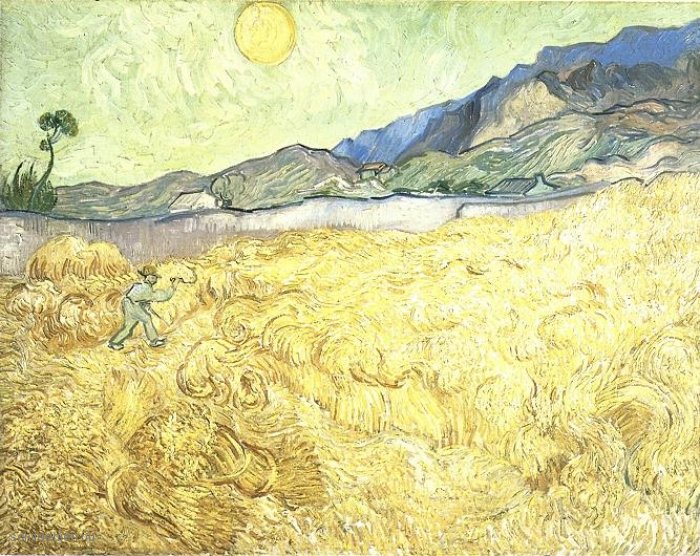
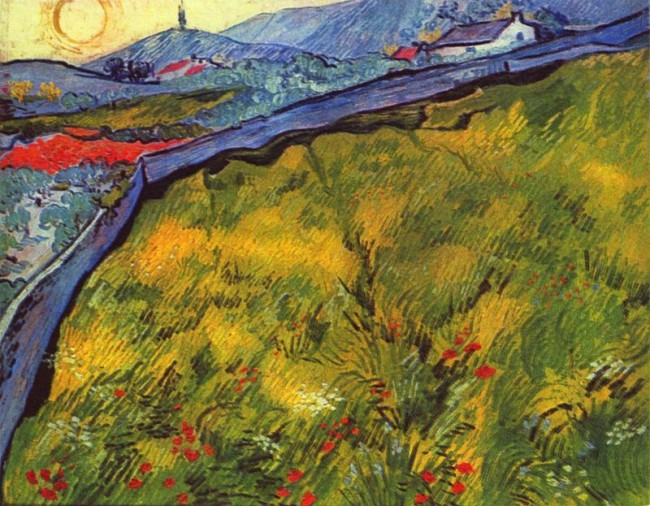
With his unstable state of mind, there are also times when Vincent does not take good care of himself. In 1886 he studies at the art academy in Antwerp and becomes so absorbed in his drawings that he neglects himself. Eventually he ends up with a doctor who finds that he is simply starved to death. Vincent dares to admit to Theo how it happened (letter 558, February 1886):
Now I have made it worse by smoking a lot, which I did all the more because I then don't feel my empty stomach.
As a true Calvinist, Vincent is strongly focused on his duty, in his case the need to draw and paint. In a letter to Theo, written from Arles (letter 687, September 1888), he nicely summarizes that he somehow considers his pipe as a well-deserved reward after work done:
whether one exhibits or not, we have to be productive and then we have the right to smoke a pipe at rest.
Vincent was certainly productive in his last years. In barely ten years, between 1880 and 1889, he made approximately 900 paintings and 1100 works on paper!
In times of depression no pipe for Vincent
Vincent has suffered from strong mood swings, even depression, all his life. If he is not feeling well, then he does not care about pipe smoking. In early 1882 he had a period in which he had to undergo painful treatments in the hospital. But in July 1882, things are apparently going better. He lets Theo know in a letter (letter 241, July 1, 1882) that he is getting better and drawing again. He himself experiences this as follows:
the sense of things comes back to life, which for a while was intoxicated, so to speak, and left a great void. I love everything I see again.
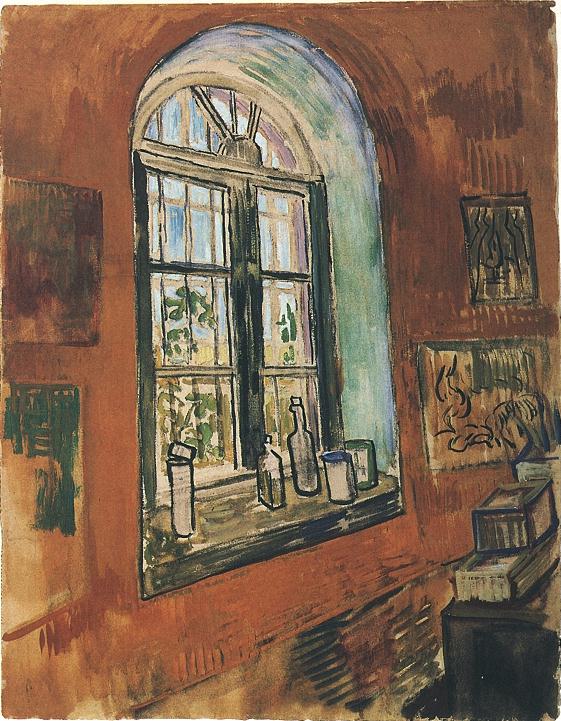
It turns out that he hasn't touched pipe and tobacco in a month’s time, but now smokes his pipe again with pleasure.
And then I have not smoked a pipe in about a months’ time and now I can say an old acquaintance is back again. I can't tell you what a pleasure it is to be back here in my studio.
We know Vincent's studio from one of his paintings (Fig. 45). Image and text match perfectly here. A few years later in Arles, Vincent again suffers from a depressed mood. As so often, he honestly writes to Theo what he does (letter 635, July 1, 1888):
The only thing that offers me relief and distraction - in my case - is to numb me by drinking a good glass and smoking heavily.
Apparently he is not in good control of himself. The neighbours around the square in front of the famous yellow house where Vincent lives start complaining a year later that Van Gogh drinks too much and can therefore become dangerous for the inhabitants of Arles. They even write a petition to the mayor to request that Van Gogh be included, which happens consequently. Vincent takes it as it is; he has been hospitalized before. He reports from Arles to Theo (letter 750, April 19, 1889):
They criticize me for drinking, well, well.
He is particularly concerned that the institution where he was admitted forbids him to smoke. In the same letter, he concludes with:
How's Mother and our sister? Because I have nothing else to distract me - they even forbid me to smoke, which the other patients are allowed to do - I think about all those I love day and night.
Vincent nevertheless retains a contemplative view of life. He sees the advantages and disadvantages of his addictions, besides the tobacco also the alcohol, which also take away his sexual appetites. He admits to Theo that there is also something good in it (letter 768, May 3, 1889):
Alcohol and tobacco have both good and bad sides in the end - it's a bit relative - they're both anti-aphrodisiacs, I think you should call it. Incidentally, not always bad at practicing the arts.